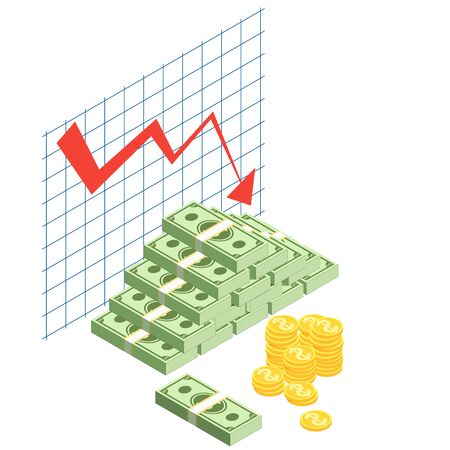1. Understanding Your Financial Situation
Before you can start your journey from paycheck to prosperity, you need to get a clear picture of your financial standing. Understanding where your money is coming from and where its going will help you create a plan to eliminate debt and build financial stability.
Assess Your Income
Your income is the foundation of your financial situation. Start by listing all sources of income, including your salary, side gigs, rental income, or any other earnings. Knowing exactly how much money you bring in each month will help you make informed financial decisions.
(1) List All Sources of Income
| Income Source | Monthly Amount ($) |
|---|---|
| Main Salary | [Enter Amount] |
| Side Hustle | [Enter Amount] |
| Rental Income | [Enter Amount] |
| Other Income | [Enter Amount] |
| Total Monthly Income | [Total] |
Track Your Expenses
The next step is to identify where your money is going. Categorizing your expenses will reveal spending patterns and highlight areas where you might be able to cut back.
(2) Categorize Your Expenses
| Expense Category | Monthly Amount ($) |
|---|---|
| Rent/Mortgage | [Enter Amount] |
| Utilities (Electricity, Water, Internet) | [Enter Amount] |
| Groceries | [Enter Amount] |
| Transportation (Gas, Public Transit) | [Enter Amount] |
| Debt Payments | [Enter Amount] |
| Entertainment & Dining Out | [Enter Amount] |
| Savings & Investments | [Enter Amount] |
| Miscellaneous | [Enter Amount] |
| Total Monthly Expenses | [Total] |
Evaluate Your Debt
A crucial part of understanding your financial situation is knowing how much debt you have. Make a list of all outstanding debts, including credit cards, student loans, car loans, and personal loans.
(3) List Your Debts
| Lender/Creditor | Total Balance ($) | Minimum Payment ($) | Interest Rate (%) |
|---|---|---|---|
| [Credit Card 1] | [Balance] | [Min Payment] | [Rate] |
| [Credit Card 2] | [Balance] | [Min Payment] | [Rate] |
| [Student Loan] | [Balance] | [Min Payment] | [Rate] |
| [Car Loan] | [Balance] | [Min Payment] | [Rate] |
| Total Debt Balance: | [Total Balance] | ||
Create a Snapshot of Your Finances
Once youve listed your income, expenses, and debts, compare your total monthly income with your total monthly expenses and debt payments. If youre spending more than youre earning, its time to make adjustments.
(4) Calculate Your Financial Standing
| Description | Total Amount ($) |
|---|---|
| Total Monthly Income | [Total Income] |
| Total Monthly Expenses | [Total Expenses] |
| Total Monthly Debt Payments | [Total Debt Payments] |
| Your Financial Standing: [Income – (Expenses + Debt Payments)] | |
This assessment gives you a clear view of where you stand financially. The next step is to develop a strategy to reduce debt and improve financial health.
2. Creating a Realistic Budget
One of the most crucial steps in getting out of debt is creating a budget that works for your lifestyle. A well-structured budget ensures that you cover essential expenses while setting aside money to pay down your debt effectively.
Why a Realistic Budget Matters
A budget isn’t about restricting yourself—it’s about gaining control over your finances. By crafting a realistic budget, you can avoid overspending, reduce financial stress, and make steady progress toward financial freedom.
(1) Assess Your Income and Expenses
The first step in budgeting is understanding where your money is coming from and where it’s going. Start by listing all sources of income and categorizing your expenses.
| Category | Examples |
|---|---|
| Income | Salary, side gigs, freelance work, rental income |
| Fixed Expenses | Rent/mortgage, car payment, insurance, utilities |
| Variable Expenses | Groceries, dining out, entertainment, transportation |
| Savings & Debt Payments | Emergency fund, credit card payments, loan repayments |
(2) Prioritize Necessities Over Wants
Your necessities—like housing, food, and utilities—should always come first. If youre struggling to make ends meet, consider reducing discretionary spending on things like streaming services or dining out until your financial situation improves.
(3) Allocate Funds for Debt Repayment
If youre serious about getting out of debt, allocate a portion of your income specifically for debt repayment. Consider using one of these proven methods:
(1) The Snowball Method
This method focuses on paying off the smallest debts first while making minimum payments on larger ones. As each small debt is eliminated, you roll its payment amount into the next debt.
(2) The Avalanche Method
This approach prioritizes debts with the highest interest rates first. By tackling high-interest debt early, you save more money in the long run.
(4) Adjust as Needed
Your budget isn’t set in stone. Life circumstances change, so review your budget regularly and make adjustments as needed to stay on track toward financial stability.

3. Building an Effective Debt Payoff Plan
Getting out of debt requires a solid strategy and a commitment to following through. There are several proven methods to systematically pay off debt, and choosing the right one depends on your financial situation and personal motivation. Two of the most popular strategies are the snowball method and the avalanche method.
The Snowball Method
The snowball method focuses on paying off debts from smallest to largest, regardless of interest rates. This approach helps build momentum and motivation as you see quick wins.
How It Works:
- List all your debts from smallest to largest balance.
- Make minimum payments on all debts except the smallest one.
- Put any extra money toward paying off the smallest debt first.
- Once the smallest debt is paid off, roll that payment amount into the next smallest debt.
- Repeat until all debts are eliminated.
Pros and Cons:
| Pros | Cons |
|---|---|
| Quick wins keep you motivated. | You may pay more in interest over time. |
| Simplifies debt repayment strategy. | Larger debts with high interest may take longer to pay off. |
The Avalanche Method
The avalanche method prioritizes debts with the highest interest rates first, saving you money in the long run.
How It Works:
- List all your debts from highest to lowest interest rate.
- Make minimum payments on all debts except the one with the highest interest rate.
- Put any extra money toward paying off the highest-interest debt first.
- Once that debt is gone, apply its payment amount to the next highest-interest debt.
- Repeat until all debts are paid off.
Pros and Cons:
| Pros | Cons |
|---|---|
| You save more on interest over time. | Takes longer to see progress compared to the snowball method. |
| You pay off expensive debts faster. | Might be harder to stay motivated if large debts take time to clear. |
Selecting the Right Strategy for You
The best payoff plan depends on your personality and financial goals. If you need motivation through small victories, the snowball method might be ideal. If saving money on interest is your priority, then go with the avalanche method. Whichever path you choose, consistency and discipline are key to achieving financial freedom.
4. Boosting Your Income and Cutting Expenses
Getting out of debt faster requires a two-pronged approach: increasing your income and reducing unnecessary expenses. By making strategic adjustments, you can free up more money to pay off debts while still maintaining a comfortable lifestyle.
Increasing Your Income
Finding ways to earn extra cash can significantly speed up your journey to financial freedom. Here are some practical methods to boost your income:
(1) Take on a Side Hustle
Consider part-time gigs like freelancing, rideshare driving, pet sitting, or selling handmade products online. Platforms like Upwork, Fiverr, and Etsy can help you connect with potential clients.
(2) Ask for a Raise or Promotion
If youve been excelling at your job, research industry salary standards and prepare a strong case to negotiate better pay with your employer.
(3) Monetize Your Skills
Use your expertise to offer tutoring, coaching, or consulting services. Websites like Teachable or Udemy allow you to create and sell online courses.
(4) Rent Out Extra Space
If you have an unused room or property, consider renting it out through Airbnb or long-term rental platforms to generate passive income.
Cutting Unnecessary Expenses
Reducing spending allows you to allocate more funds toward debt repayment. Here are some effective ways to trim down your expenses:
(1) Reduce Subscription Costs
Review your monthly subscriptions—streaming services, gym memberships, and magazine subscriptions—and cancel those you rarely use.
(2) Cook at Home More Often
Dine-in meals cost significantly less than eating out. Plan weekly menus and prepare meals in bulk to save both time and money.
(3) Cut Back on Impulse Purchases
Create a 24-hour rule before making non-essential purchases. This gives you time to evaluate whether the item is truly necessary.
(4) Compare Prices Before Buying
Use price comparison apps or websites to ensure youre getting the best deal on groceries, electronics, and household items.
Savings Potential from Expense Cuts
| Expense Category | Potential Monthly Savings ($) |
|---|---|
| Canceled Subscriptions | $20 – $50 |
| Cooking at Home | $100 – $300 |
| Avoiding Impulse Buys | $50 – $150 |
| Price Comparisons & Discounts | $30 – $100 |
| Total Potential Savings | $200 – $600+ |
The combination of earning extra income and cutting unnecessary expenses provides a powerful strategy for accelerating debt repayment. By making small but consistent changes, you can break free from financial stress and move closer to prosperity.
5. Staying Debt-Free and Growing Your Wealth
Getting out of debt is a huge accomplishment, but staying debt-free and building long-term wealth requires ongoing effort. By developing smart financial habits and investing wisely, you can ensure financial stability and future prosperity.
Developing Smart Financial Habits
The key to maintaining financial freedom is creating sustainable habits that prevent you from falling back into debt. Here are some essential steps:
(1) Track Your Spending
Regularly monitoring your expenses helps you stay in control of your finances. Use budgeting apps or spreadsheets to keep track of where your money goes.
(2) Build an Emergency Fund
An emergency fund protects you from unexpected expenses like medical bills or car repairs, preventing the need to rely on credit cards or loans.
(3) Avoid Lifestyle Inflation
As your income grows, resist the temptation to increase your spending. Instead, allocate extra funds toward savings and investments.
(4) Use Credit Responsibly
If you use credit cards, pay off the balance in full each month. This helps you maintain a good credit score without accumulating debt.
Investment Strategies for Long-Term Prosperity
Once youre debt-free, investing becomes a crucial step toward building wealth. Here are some effective strategies:
(1) Contribute to Retirement Accounts
Take advantage of employer-sponsored 401(k) plans or open an IRA to grow your retirement savings with tax advantages.
(2) Diversify Your Investments
Spread your investments across different asset classes such as stocks, bonds, and real estate to minimize risk and maximize returns.
(3) Invest in Low-Cost Index Funds
Index funds offer diversification at a low cost, making them an excellent option for long-term wealth accumulation.
(4) Automate Your Investments
Setting up automatic contributions to your investment accounts ensures consistent growth without requiring constant attention.
Financial Stability Checklist
| Step | Description |
|---|---|
| Create a Budget | Plan monthly expenses and track spending. |
| Save for Emergencies | Aim for 3-6 months worth of living expenses in an emergency fund. |
| Avoid Unnecessary Debt | Only borrow when absolutely necessary and have a repayment plan. |
| Invest Consistently | Make regular contributions to retirement and investment accounts. |
| Review Finances Regularly | Check your budget and investments periodically to stay on track. |
By implementing these habits and investment strategies, you can maintain financial stability and set yourself up for long-term prosperity. The key is consistency—small, smart decisions over time will lead to significant financial growth.


